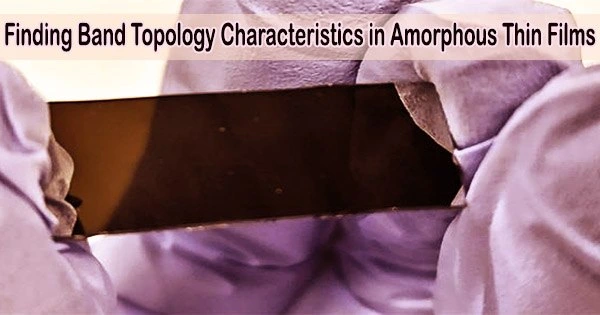With a focus on the shape or topology, of these unique materials’ electronic structures (electronic bands), researchers have been investigating them in recent years. Their peculiar geometry in topological materials creates a variety of special features that can be ideal for constructing next-generation electronics, despite not being apparent in actual space.
It was believed that crystalline materials, where atoms are highly organized and grouped in repeating patterns, were required in order to take advantage of topological physical features.
Amorphous materials, which have disordered atoms that are only intermittently organized over short distances, were thought to be unsuited for retaining the exceptional physical features of topological materials.
We discovered that the concept of band topology, which has been discussed mainly in crystals, is also valid and technologically useful in amorphous states.
Professor Kohei Fujiwara
Now, a collaborative research group has verified that even amorphous materials can have these special properties. The group was led by Associate Professor Kohei Fujiwara and Professor Atsushi Tsukazaki from Tohoku University’s Institute for Materials Research (IMR); Lecturer Yasuyuki Kato and Professor Yukitoshi Motome from the University of Tokyo’s Graduate School of Engineering and Associate Professor Hitoshi Abe at the High Energy Accelerator Research Organization’s Institute for Materials Structure Science. Details of their findings were reported in the journal Nature Communications on June 13, 2023.
“We discovered that the concept of band topology, which has been discussed mainly in crystals, is also valid and technologically useful in amorphous states,” stated Fujiwara.
The researchers used tests with iron-tin amorphous thin films and model calculations to make their discovery. The anomalous Hall effect and the Nernst effect, in particular, were shown to exist in the amorphous material despite having a short-range atom configuration.
“Amorphous materials are easier and cheaper to make compared to crystals, so this opens up new possibilities for developing devices using these materials. This could lead to advancements in sensing technology, which is important for creating the Internet of Things (IoT) where many devices are connected and communicate with each other,” adds Fujiwara.
The team is keen to find more amorphous materials in the future and create novel devices with them.





